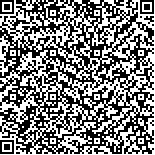| 本文已被:浏览 3128次 下载 2080次 |

码上扫一扫! |
|
|
| 溶解无机氮加富对海带养殖水体无机碳体系的影响 |
|
韩婷婷1,2,3, 蒋增杰3, 张继红3, 方建光3, 李加琦3, 毛玉泽3, 黄瑶3, 刘光谋4
|
|
1.中国科学院海洋研究所,青岛 266071;2.中国科学院大学,北京 100049;3.农业部海洋渔业资源可持续利用重点开放实验室 中国水产科学研究院黄海水产研究所,青岛 266071;4.国家海产贝类工程技术研究中心, 荣成 264316
|
|
| 摘要: |
| 通过室内模拟实验,研究了在海带养殖水体中添加不同浓度的无机氮(NO3--N和NH4+-N)对海水无机碳体系的影响。结果表明,无机碳体系各组分的变化趋势与无机氮添加浓度和无机氮形态有关。当NO3--N和NH4 -N浓度范围分别在4.73-52.78 µmol/L和2.56-34.66 µmol/L时,DIC、HCO3-和pCO2均随着营养盐浓度的增加呈下降趋势,其中以NO3--3和NH4 -3组变化最为明显,均达到最低值,分别为2054和2112 µmol/L、1776和1869 µmol/L、86和114 µatm;而当NO3--N和NH4 -N浓度范围分别为52.78-427.29 µmol/L和34.66-268.33 µmol/L时,DIC、HCO3-和pCO2随着营养盐浓度的增加,其下降幅度逐渐减弱,但实验结束时DIC、HCO3-和pCO2仍低于对照组。NO3--N对海带养殖水体无机碳体系的影响较NH4 -N明显,加NO3--N组对水体的固碳能力显著高于加NH4 -N组。因此,当NO3--N和NH4 -N浓度分别为52.78 µmol/L和34.66 µmol/L时,海带的光合固碳能力达到最大,过高或者过低均会降低海带对水体无机碳的吸收固定。 |
| 关键词: 溶解无机氮 无机碳体系 固碳 海带 |
| DOI:10.11758/yykxjz.20140103 |
| 分类号: |
| 基金项目:国家重点基础研究发展计划(2011CB409805)、十二五支撑计划课题(2011BAD13B06)、国家自然科学基金(41276172)、国家海洋局海洋公益性行业科研经费专项(201205031) |
|
| Effects of DIN enrichment on inorganic carbon system of Saccharina japonica culture water |
|
|
| Abstract: |
| Effects of dissolved inorganic nitrogen (NO3--N and NH4+-N) addition on dissolved inorganic carbon (DIC) system of Saccharina japonica culture water were studied. The results indicated that the inorganic carbon system was correlated with the concentrations and forms of DIN. The concentrations of DIC, HCO3- and pCO2 decreased with the increasing nitrogen concentration in the range of 4.73-52.78 µmol/L (NO3--N) and 2.5-34.66 µmol/L (NH4 -N), and they were most remarkably affected by the NO3--3 and NH4 -3 treatments, corresponding with the lowest values of 2054 and 2112 µmol/L, 1776 and 1869 µmol/L, 86 and 114 µatm, respectively. However, when the concentration of nitrogen was between 52.78-427.29 µmol/L (NO3--N) and 34.66-268.33 µmol/L (NH4 -N), the falling trends of DIC, HCO3- and pCO2 were weakened with the increasing nitrogen, but the concentrations of DIC, HCO3- and pCO2 were also lower than the control. Influence of NO3--N addition on the inorganic carbon system of seawater was larger than NH4 -N addition, and the ability of carbon fixation in NO3--N treatment was significantly higher than in NH4 -N treatment. The highest capacity of photosynthetic carbon fixation by S. japonica appeared in 52.78 µmol/L (NO3--N) and 34.66 µmol/L (NH4 -N). The DIC assimilation ability by S. japonica would decrease when NO3--N and NH4 -N deviated from the optimum values. |
| Key words: Dissolved inorganic nitrogen Inorganic carbon system Carbon fixation Saccharina japonica |